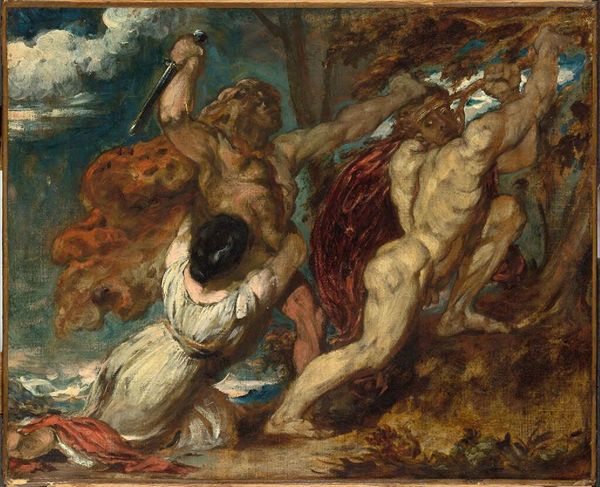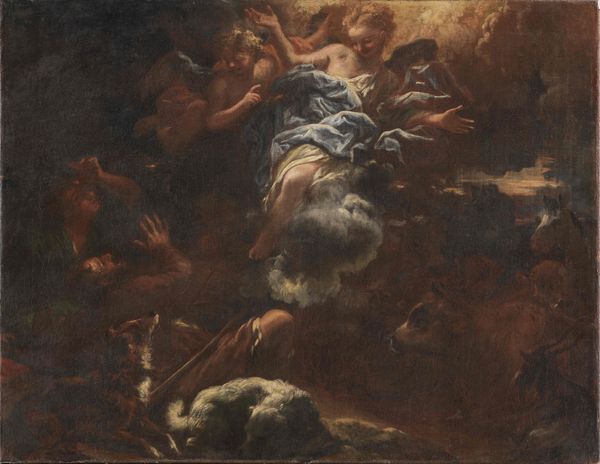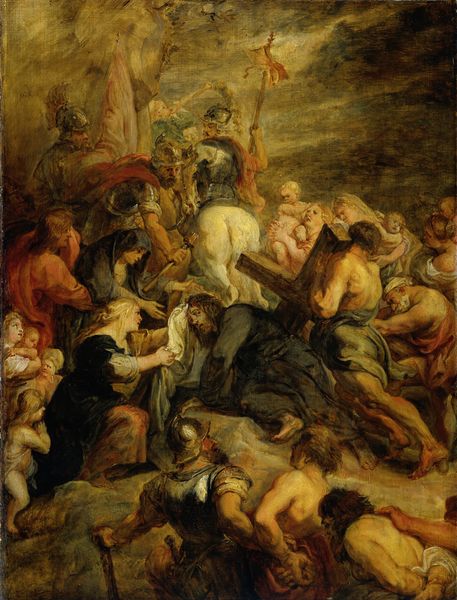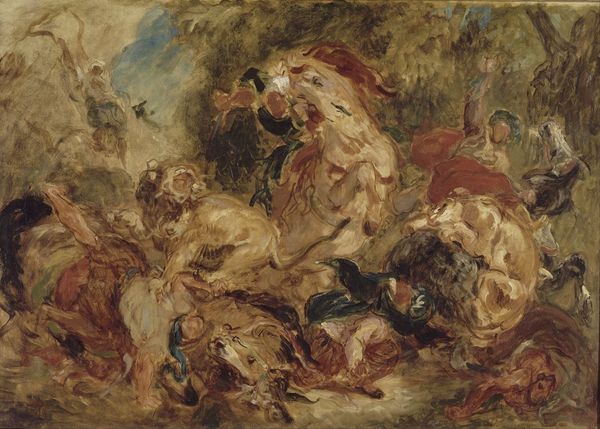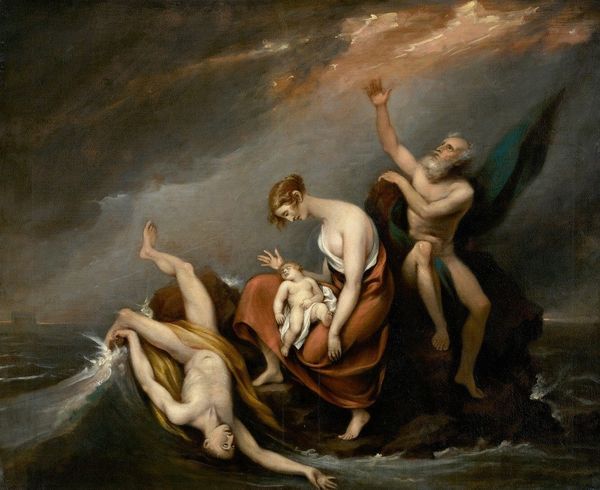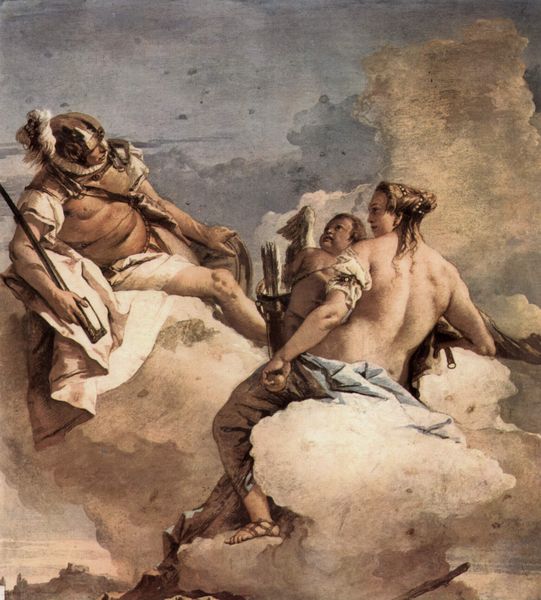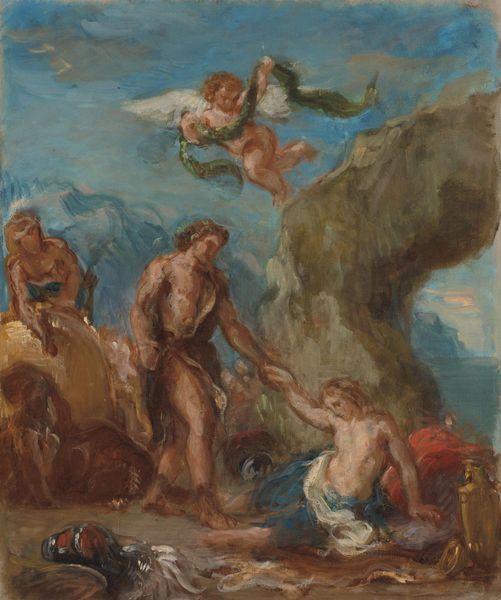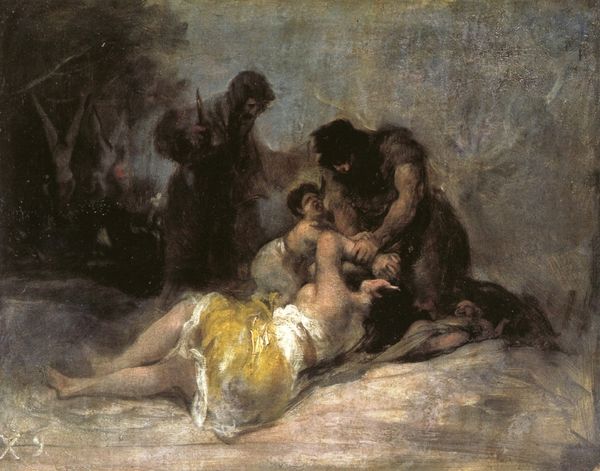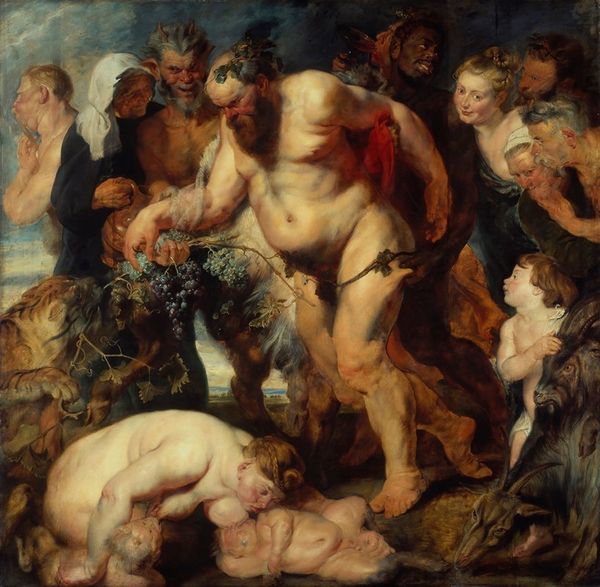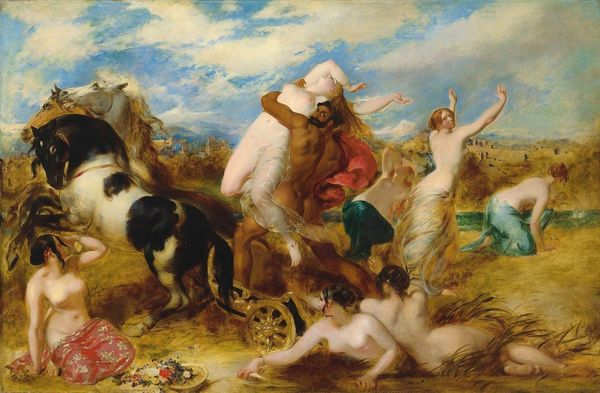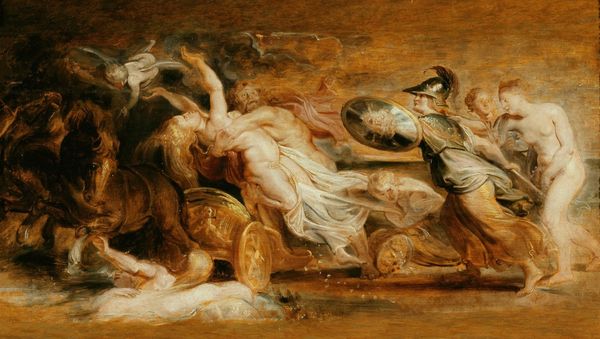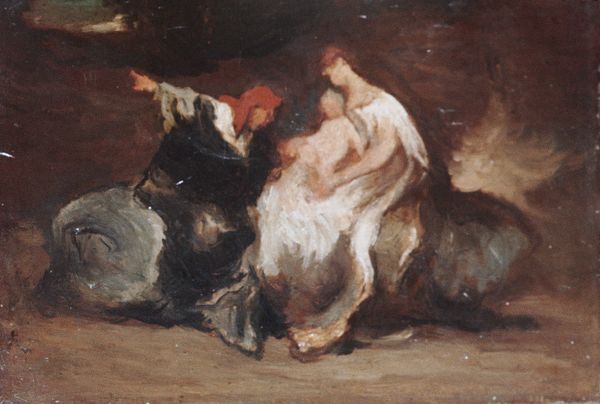
painting, oil-paint
#
baroque
#
painting
#
oil-paint
#
figuration
#
oil painting
#
history-painting
Copyright: Public Domain: Artvee
Curator: Before us hangs Francesco Guardi's "The Sacrifice of Isaac," an oil painting estimated from the 1750s. Editor: My first impression is that it's surprisingly dreamlike given the severity of the subject matter. There's a haziness, an almost ethereal quality in the way Guardi depicts this biblical scene. Curator: Note how Guardi achieves this. He was known for his fluid brushwork, which downplays distinct form to evoke fleeting atmosphere. He almost certainly would have been grinding his own pigments in his studio, using lead-based paints and perhaps extenders, all contributing to the distinctive materiality of the final work. Editor: Absolutely, and those fluid brushstrokes also lend themselves beautifully to expressing the deep emotion within the piece. Abraham’s face, raised in supplication; the angel’s urgent gesture—it’s all so dramatically rendered. Angels themselves signify intervention, salvation; their placement almost always suggests hope amidst despair. Curator: The consumption of such imagery tells its own story. We can see the Baroque period here and the emphasis on theatrical and overt emotion to appeal to a wide audience, especially with these moralistic stories from the bible. The price and availability of paint in mid-18th century Venice, and access to proper studio conditions and commissions all dictated how accessible it was to even create a piece like this. Editor: And what of the sacrificial lamb, subtly placed at the lower-right edge? That single animal carries immense symbolic weight; it offers both redemption for Isaac and a foreshadowing of Christ's ultimate sacrifice. These continuous symbolic relays make viewing a piece such as this so powerful. Curator: I keep coming back to the way he constructed his paints though. The use of oil in itself allows such fluidity and blendability of colour. Considering that, the haziness may come, too, from naturally occurring changes in the lead in the oil over centuries since creation, which affects colour. Editor: Fascinating! Guardi, whether consciously or unconsciously, weaves layers of symbolism and raw human emotion together so completely, rendering the artwork deeply affecting. Curator: I'll definitely look at more Guardis with fresh eyes, now. Thank you. Editor: And I am thinking anew about what older works and symbols tell us about the culture in which it originated. Thank you as well.
Comments
No comments
Be the first to comment and join the conversation on the ultimate creative platform.
